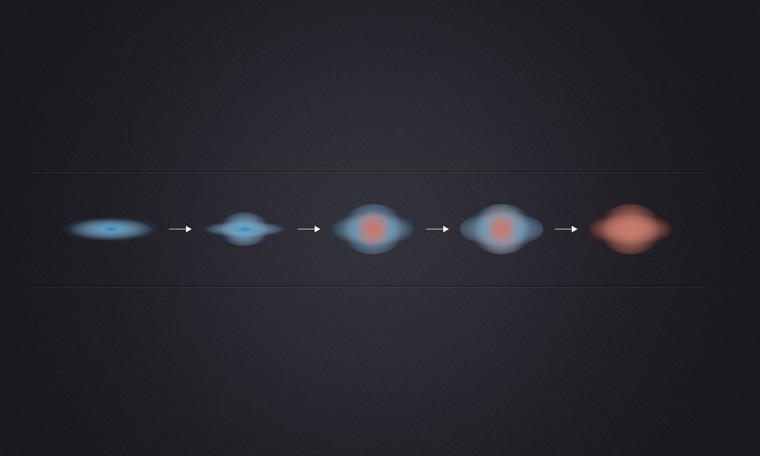The largest ancient galaxies stopped forming stars in their cores about 3 billion years after the Big Bang, with this end of star birth spreading from the inside out in so-called "dead" galaxies, scientists say.
A new survey of 22 elliptical galaxies (most of which were the same size or larger than our own Milky Way) revealed that the most massive galaxies from about 10 billion years ago have stopped forming stars in their centers while formation continued on the outskirts. Astronomers call these elliptical galaxies "red and dead" as they contain a lot of old, dead red stars, but fewer blue youngsters.

The survey adds fuel to an ongoing debate about how the star shutdown occurs. One leading theory says that a supermassive black hole drives gas out and disrupts star formation, while the other supposes there is a yet-unexplained mechanism that switches off the gas supply in the center.
Lead study author Sandro Tacchella of ETH Zurich's institute for astronomy in Switzerland said the new data would support either of these two contentions, or even a combination of the two. Figuring out what stopped the star formation in these massive galaxies will require more observations, he said. He plans a further, focused study with Hubble that will look at the 10 largest galaxies to study their star formation habits more closely.
The research was published in the April 16 edition of the journal Science.
This is a condensed version of a report from Space.com. Read the full report. Follow Elizabeth Howell @howellspace, or Space.com @Spacedotcom,Facebook and Google+.